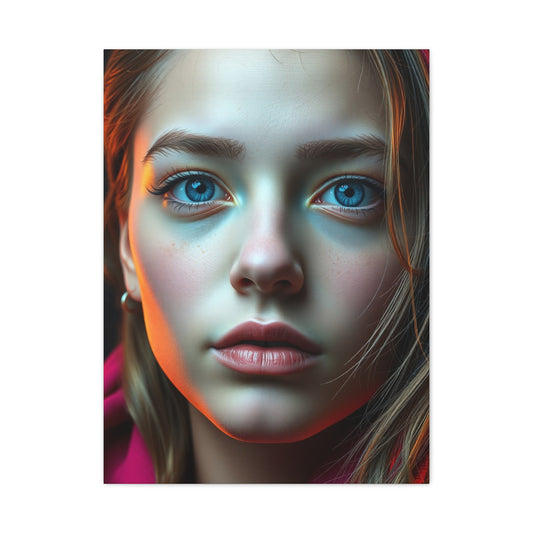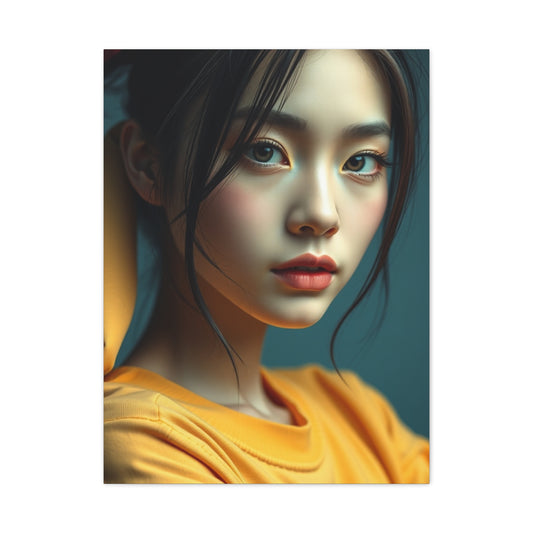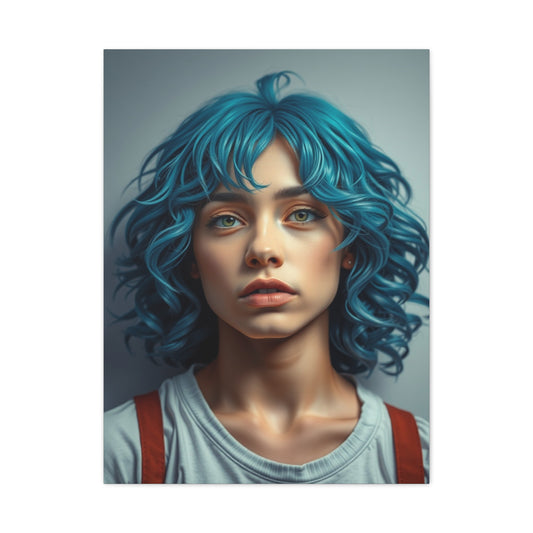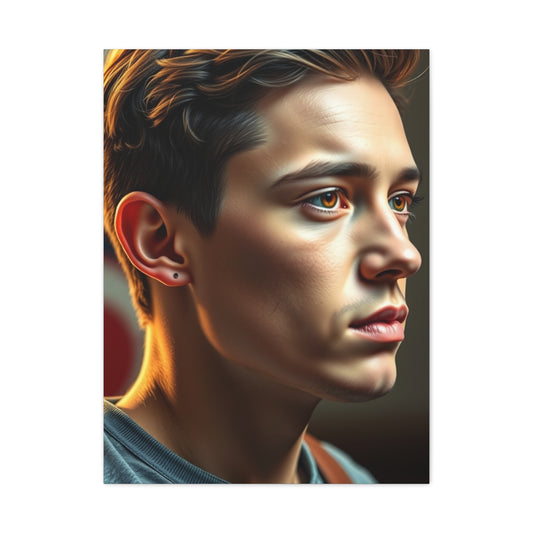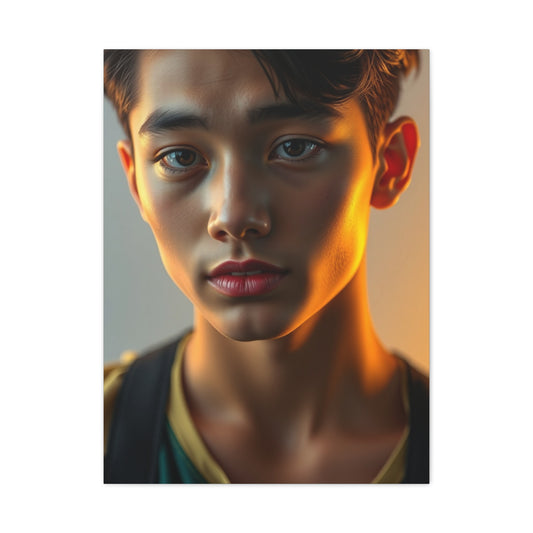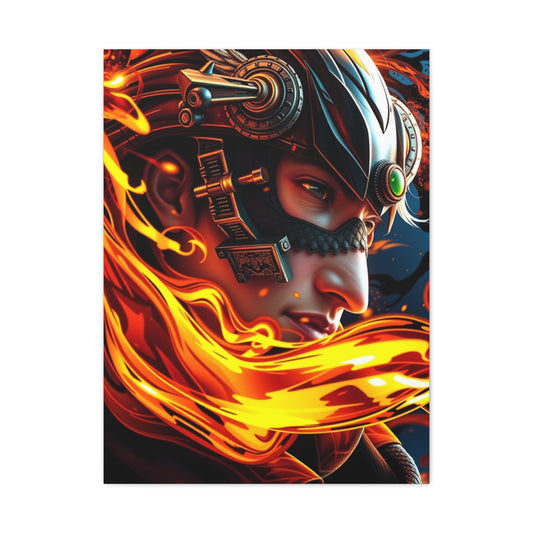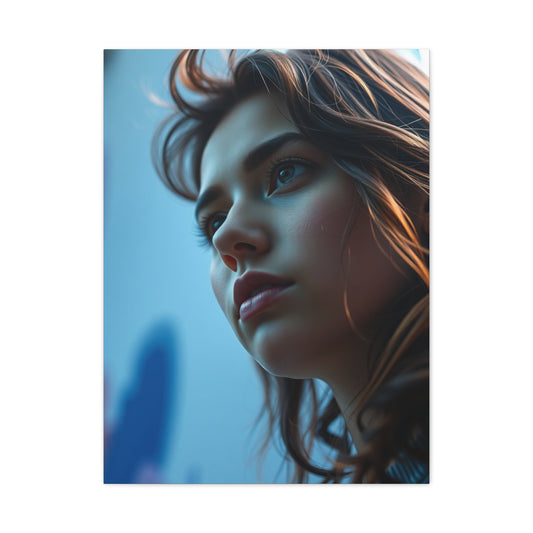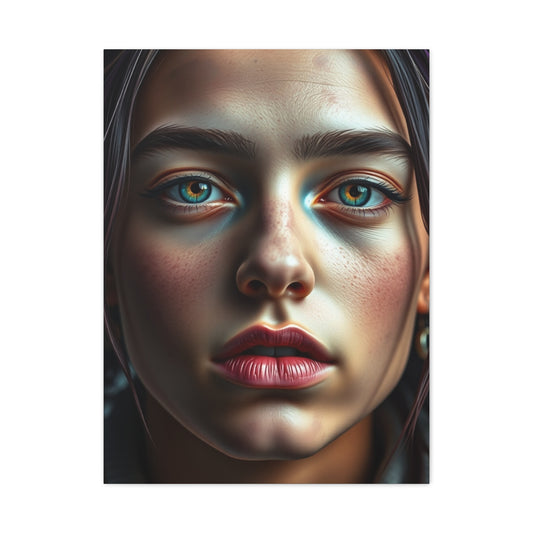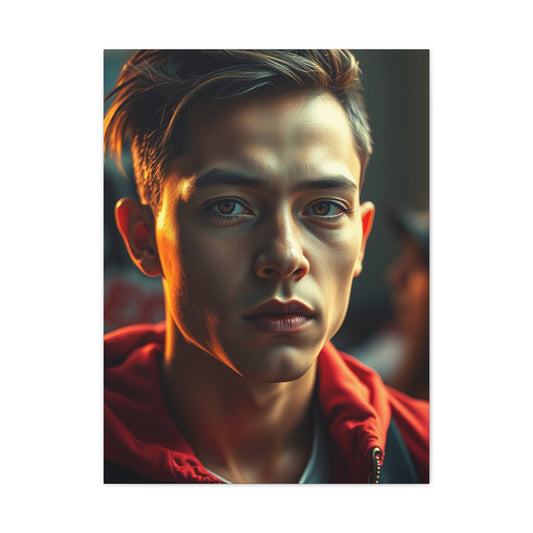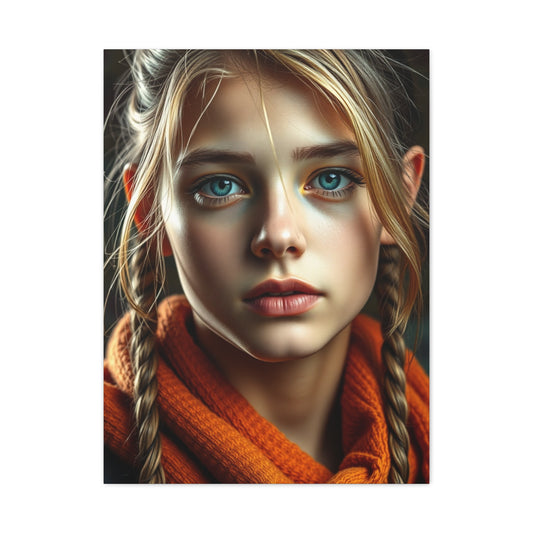-
Art for Teens Art Premium Gallery Wall Art & Canvas Print
Regular price From $141.23 USDRegular priceUnit price per -
Elite Art for Teens Art Vision Wall Art & Canvas Print
Regular price From $141.23 USDRegular priceUnit price per -
Art for Teens Art Luxury Canvas Wall Art & Canvas Print
Regular price From $141.23 USDRegular priceUnit price per -
Masterpiece Art for Teens Art Vision Wall Art & Canvas Print
Regular price From $141.23 USDRegular priceUnit price per -
Vision Art for Teens Art Art Wall Art & Canvas Print
Regular price From $141.23 USDRegular priceUnit price per -
Collection Art for Teens Art Art Wall Art & Canvas Print
Regular price From $141.23 USDRegular priceUnit price per -
Supreme Art Collection Art for Teens Wall Art & Canvas Print
Regular price From $141.23 USDRegular priceUnit price per -
Art for Teens Art Supreme Gallery Wall Art & Canvas Print
Regular price From $141.23 USDRegular priceUnit price per -
Supreme Art for Teens Art Collection Wall Art & Canvas Print
Regular price From $141.23 USDRegular priceUnit price per -
Art for Teens Art Refined Canvas Wall Art & Canvas Print
Regular price From $141.23 USDRegular priceUnit price per
Transform Your Teen's Space: The Ultimate Guide to Bedroom Wall Art for Teenagers
Creating the perfect sanctuary for teenagers requires understanding their evolving personalities, dynamic interests, and desire for self-expression. Among all decorative elements, wall art stands as the most transformative component that can instantly revolutionize a teenager's bedroom atmosphere. This comprehensive guide explores innovative approaches to selecting, arranging, and implementing wall art that resonates with teenage sensibilities while maintaining aesthetic sophistication.
The teenage years represent a pivotal period of identity formation, where young individuals constantly explore different facets of their personality through various mediums of expression. Wall art serves as a canvas for these explorations, allowing teenagers to showcase their passions, dreams, aspirations, and evolving tastes without permanent commitment. Unlike major furniture investments or structural changes, wall art offers flexibility and adaptability that aligns perfectly with the transitional nature of adolescence.
Understanding the Psychology Behind Teenage Decorative Preferences
The teenage brain undergoes significant developmental changes that directly influence aesthetic preferences and decorative choices. During this formative period, adolescents experience heightened emotional responses, increased desire for independence, and an intensified need for personal space that reflects their unique identity. Wall art becomes a powerful tool for emotional regulation, self-affirmation, and creative expression.
Research in developmental psychology indicates that teenagers derive immense satisfaction from environments that feel authentically theirs. When adolescents have control over their personal space decoration, they demonstrate improved mood stability, enhanced creativity, and increased sense of ownership over their environment. Wall art selections often mirror their internal emotional landscape, serving as visual representations of their hopes, interests, and evolving worldview.
The significance of peer acceptance during teenage years also influences decorative choices. Many adolescents select wall art pieces that they believe will impress friends or align with current trends within their social circles. Understanding this dynamic helps parents and teenagers collaborate effectively when choosing artwork that satisfies both personal expression and social considerations.
Additionally, teenagers often use wall art as a form of non-verbal communication with family members, expressing thoughts, feelings, or interests they might struggle to articulate verbally. A carefully curated collection of wall art can provide insights into a teenager's inner world while fostering meaningful conversations about their developing identity and future aspirations.
Essential Considerations for Selecting Teenage Bedroom Wall Art
Choosing appropriate wall art for teenage bedrooms requires careful consideration of multiple factors that extend beyond mere aesthetic appeal. The selection process should encompass practical considerations, longevity potential, and alignment with the teenager's authentic interests rather than fleeting trends.
Quality stands as a paramount consideration when investing in teenage bedroom wall art. While budget constraints often influence purchasing decisions, selecting well-made pieces ensures durability throughout the frequently changing teenage years. High-quality prints maintain color vibrancy over time, resist fading from natural light exposure, and withstand the wear associated with frequent rearrangement that characterizes teenage decorating habits.
Size appropriateness plays a crucial role in achieving visual balance within teenage bedrooms. Many adolescent spaces feature multiple functional areas including study zones, sleeping areas, and socialization spaces. Wall art dimensions should complement these various zones while maintaining proportional harmony. Oversized pieces can overwhelm smaller rooms, while undersized artwork may appear insignificant within larger spaces.
Color coordination requires delicate balance between complementing existing decor and allowing room for future changes. Teenagers frequently experiment with different color schemes as their preferences evolve. Selecting wall art with versatile color palettes or neutral bases with colorful accents provides flexibility for future decorative transitions without requiring complete artwork replacement.
Thematic consistency contributes to cohesive room design while avoiding overwhelming visual chaos. However, this doesn't necessitate rigid adherence to single themes. Instead, successful teenage bedroom wall art collections often feature connecting elements such as similar color schemes, complementary styles, or unified emotional tones that create harmony despite diverse subject matter.
Contemporary Wall Art Styles That Resonate with Modern Teenagers
Today's teenagers have access to unprecedented artistic diversity through digital platforms, social media exposure, and global cultural exchange. This exposure has cultivated sophisticated aesthetic appreciation and openness to various artistic movements and styles that previous generations might not have encountered until adulthood.
Minimalist aesthetics have gained tremendous popularity among teenagers who appreciate clean lines, uncluttered compositions, and sophisticated simplicity. This style appeals to adolescents seeking mature, refined environments that contrast with the chaotic nature of their daily lives. Minimalist wall art often features geometric shapes, monochromatic color schemes, and negative space utilization that creates calming, focused environments conducive to studying and relaxation.
Abstract expressionism offers teenagers opportunities to interpret artwork personally while engaging with emotionally resonant compositions. These pieces encourage introspection and creative thinking while providing conversation starters for friends and family members. Abstract wall art allows adolescents to project their own meanings onto pieces, creating deeper personal connections with their decorative choices.
Photography-based wall art has experienced remarkable popularity growth among teenagers, particularly pieces featuring travel destinations, nature scenes, and urban landscapes. These images often represent aspirational elements, inspiring teenagers to pursue adventures, explore new places, and broaden their horizons. High-quality photographic prints can transform teenage bedrooms into windows to the wider world.
Vintage and retro aesthetics appeal to teenagers seeking connection with previous eras while expressing individuality through nostalgic elements. This trend encompasses everything from classic movie posters and vintage advertisements to retro typography and mid-century modern designs. These pieces often spark intergenerational conversations and demonstrate sophisticated appreciation for design history.
Contemporary pop art continues influencing teenage aesthetic preferences through bold colors, recognizable imagery, and playful compositions. Modern interpretations of pop art often incorporate current cultural references while maintaining the movement's characteristic energy and visual impact.
Creative Wall Art Ideas for Female Teenagers
Female teenagers often gravitate toward wall art that reflects their multifaceted interests, emotional depth, and aesthetic sophistication. The key lies in selecting pieces that honor their complexity while providing room for continued growth and evolution.
Botanical and floral artwork offers timeless appeal that transcends temporary trends while providing natural beauty and serenity. These pieces can range from realistic botanical illustrations to stylized floral abstractions, offering options for various aesthetic preferences. Botanical wall art creates connections with nature, particularly valuable for teenagers living in urban environments with limited outdoor access.
Inspirational typography and motivational quotes provide daily encouragement while reflecting personal values and aspirations. However, successful implementation requires careful selection of meaningful, authentic messages rather than generic platitudes. Personal quotes, favorite literary passages, or original poetry can create more meaningful connections than mass-produced motivational phrases.
Artistic portraits and figure studies appeal to teenagers interested in human connection, emotion, and artistic technique. These pieces can include everything from classical portrait reproductions to contemporary artistic interpretations that explore themes of identity, empowerment, and self-expression.
Cultural and travel-themed artwork satisfies wanderlust while exposing teenagers to global artistic traditions and cultural perspectives. Maps, cultural artifacts, landmark photography, and international artistic styles broaden worldviews while satisfying curiosity about different cultures and places.
Textile and mixed-media wall art incorporates tactile elements that engage multiple senses while adding dimensional interest to bedroom walls. Macrame hangings, woven tapestries, and fabric art pieces introduce texture variation that creates visual and tactile richness.
Distinctive Wall Art Options for Male Teenagers
Male teenagers often prefer wall art that reflects their interests in adventure, achievement, technology, and personal growth. The challenge lies in finding pieces that satisfy these interests while maintaining sophisticated aesthetic standards.
Sports-themed artwork can extend beyond basic team logos to include artistic interpretations of athletic movement, vintage sports photography, and inspirational athletic imagery. These pieces celebrate physical achievement while incorporating artistic elements that elevate them beyond simple fan merchandise.
Automotive and transportation artwork appeals to teenagers fascinated by engineering, speed, and mechanical innovation. Vintage automobile posters, motorcycle photography, and transportation history pieces combine technical interest with aesthetic appeal.
Music-themed wall art celebrates one of the most universal teenage passions through various artistic mediums. Concert photography, instrument artwork, sound wave visualizations, and music history pieces allow teenagers to showcase their musical interests while adding sophisticated artistic elements to their bedrooms.
Adventure and outdoor recreation artwork inspires exploration while bringing natural beauty indoors. Mountain landscapes, surfing photography, camping scenes, and outdoor adventure imagery encourage active lifestyles while providing visual escape from daily routines.
Technology and innovation-themed pieces appeal to teenagers interested in science, engineering, and future possibilities. These can include everything from vintage technology advertisements to contemporary digital art that explores themes of innovation and progress.
Gallery Wall Creation Techniques for Maximum Visual Impact
Gallery walls represent one of the most dynamic and flexible approaches to teenage bedroom wall art display. This technique allows for creative expression, easy modification, and incorporation of multiple interests and aesthetic elements within cohesive presentations.
Planning gallery wall layouts requires consideration of wall dimensions, furniture placement, and visual flow throughout the bedroom. Successful gallery walls create focal points without overwhelming the space or competing with other decorative elements. The key lies in achieving balance between variety and unity through careful selection and arrangement.
Template creation using paper cutouts allows teenagers to experiment with different arrangements before committing to final placement. This process prevents wall damage from multiple nail holes while encouraging creative exploration of various compositional possibilities. Templates also help ensure proper spacing and proportional relationships between pieces.
Mixing different art mediums within gallery walls creates visual interest and textural variety. Combining photographs, prints, paintings, and three-dimensional elements adds depth and complexity while preventing monotony. However, successful mixing requires attention to color coordination and style consistency to maintain cohesive overall appearance.
Incorporating personal elements such as photographs, concert tickets, award certificates, or handmade artwork personalizes gallery walls while celebrating individual achievements and memories. These elements should be integrated thoughtfully to maintain aesthetic appeal while adding meaningful personal touches.
Progressive expansion allows gallery walls to grow organically over time as teenagers acquire new pieces or develop new interests. This approach prevents overwhelming initial investment while accommodating changing preferences and evolving aesthetic sensibilities.
The Science of Hues: Mastering Color Psychology for Teenage Bedroom Wall Art Excellence
The intricate relationship between chromatic choices and psychological well-being represents one of the most fascinating aspects of interior design, particularly when curating wall art for teenage bedrooms. The adolescent mind, constantly navigating complex emotional landscapes and academic pressures, responds profoundly to environmental color stimuli in ways that can either facilitate personal growth or inadvertently create psychological obstacles. Understanding these nuanced color interactions empowers parents, teenagers, and design enthusiasts to make informed decisions that transcend mere aesthetic preferences, creating sanctuaries that actively support emotional development, cognitive function, and overall psychological wellness.
The teenage brain undergoes remarkable neuroplasticity during adolescence, making environmental influences particularly potent during this developmental phase. Color perception activates specific neural pathways that directly impact mood regulation, stress response mechanisms, and cognitive processing capabilities. When teenagers spend significant portions of their day within their bedroom environments, the cumulative effect of chromatic exposure becomes increasingly significant, potentially influencing everything from sleep quality and academic performance to social confidence and emotional resilience.
Contemporary neuroscience research has revealed that color perception occurs not merely through visual processing but through complex interactions between the visual cortex, limbic system, and endocrine responses. These discoveries have profound implications for teenage bedroom design, suggesting that thoughtful color selection in wall art can serve as a form of environmental therapy that supports healthy adolescent development while honoring individual aesthetic preferences and personality expressions.
The Neurobiological Foundation of Chromatic Perception in Adolescent Development
The adolescent brain's unique developmental characteristics create distinctive responses to chromatic stimulation that differ significantly from both childhood and adult color perception patterns. During the teenage years, the prefrontal cortex continues developing while emotional processing centers become hyperactive, creating a neurological environment where color psychology effects become amplified and potentially more influential on daily functioning and long-term behavioral patterns.
Recent neuroimaging studies have demonstrated that teenagers exhibit heightened sensitivity to environmental color stimuli, with color perception activating emotional processing centers more intensely than in other age groups. This heightened sensitivity means that bedroom wall art color choices can have profound impacts on mood stability, stress management, and cognitive performance that extend far beyond the immediate visual experience.
The teenage circadian rhythm undergoes significant shifts during adolescence, with many teenagers naturally gravitating toward later sleep and wake cycles. Color psychology research indicates that certain hues can either support or disrupt these natural circadian patterns. Cool tones tend to promote melatonin production and support healthy sleep cycles, while warmer colors can provide energizing effects that may interfere with natural sleep preparation processes.
Hormonal fluctuations during adolescence also influence color perception and psychological responses to chromatic stimuli. The emotional volatility characteristic of teenage years can be either exacerbated or moderated by environmental color choices, making thoughtful wall art selection a valuable tool for creating emotionally supportive environments that facilitate healthy coping mechanisms and emotional regulation skills.
The social aspects of teenage development also intersect with color psychology in meaningful ways. Adolescents often use color choices as forms of non-verbal communication, expressing identity, mood states, or group affiliations through their environmental preferences. Understanding these psychological underpinnings helps families navigate the balance between individual expression and psychologically supportive design choices.
Azure Influences: The Comprehensive Impact of Blue Spectrum Artwork
The blue color family encompasses an extraordinary range of psychological effects that make it particularly valuable for teenage bedroom wall art applications. From the palest powder blues to the deepest midnight navy tones, blue hues offer diverse psychological benefits that can be strategically employed to address specific teenage needs and challenges while maintaining sophisticated aesthetic appeal.
Light blue tones, reminiscent of clear skies and tranquil waters, possess remarkable anxiety-reducing properties that prove invaluable for stress-prone teenagers. These delicate hues activate parasympathetic nervous system responses that naturally lower heart rate, reduce cortisol production, and promote feelings of serenity and emotional stability. For teenagers struggling with academic pressure, social anxiety, or general stress management, incorporating light blue wall art can create a naturally calming environment that supports emotional regulation and psychological well-being.
Medium blue shades offer unique cognitive enhancement properties that make them particularly beneficial for study-focused bedroom areas. Research in environmental psychology has demonstrated that medium blue tones can improve focus, enhance memory retention, and increase analytical thinking capabilities. These effects prove especially valuable for teenagers navigating challenging academic curricula or preparing for standardized examinations. Wall art featuring medium blue elements can transform teenage bedrooms into environments that naturally support academic success and intellectual development.
Deep blue and navy tones provide sophisticated grounding effects that appeal to teenagers seeking mature, elegant environments while offering psychological benefits that support healthy sleep patterns and emotional stability. These rich hues create feelings of security, trustworthiness, and emotional depth that resonate with teenagers exploring complex identity formation and seeking environments that reflect their developing sophistication and maturity.
Turquoise and teal variations combine blue's calming properties with green's growth-promoting characteristics, creating unique psychological effects that support both emotional stability and personal development. These hybrid hues often appeal to creative teenagers while providing psychological benefits that encourage self-expression, artistic exploration, and innovative thinking patterns.
The versatility of blue-spectrum wall art allows for creative combinations that address multiple psychological needs simultaneously. Gradient effects transitioning from light to dark blues can create visual interest while providing both calming and grounding psychological influences. Abstract blue compositions can stimulate creativity while maintaining the color family's inherent tranquility benefits.
Verdant Vitality: Exploring Green's Psychological Influence on Teenage Development
Green represents one of nature's most prevalent colors, making it psychologically fundamental to human well-being and particularly beneficial for teenagers who may experience limited natural environment exposure due to urban living situations or extensive indoor study schedules. The psychological effects of green hues in teenage bedroom wall art extend far beyond simple aesthetic preferences, encompassing profound impacts on stress reduction, creativity enhancement, and overall emotional balance.
The human eye perceives green wavelengths with minimal strain, making green-toned wall art naturally comfortable to view for extended periods. This characteristic proves particularly valuable for teenagers who spend significant time in their bedrooms engaging in various activities including studying, socializing, and relaxation. Green wall art creates visually restful environments that support eye health while providing psychological benefits that enhance overall well-being.
Light green tones evoke feelings of renewal, growth, and optimism that align perfectly with the developmental nature of adolescence. These fresh, vibrant hues can inspire hope, encourage personal growth, and create uplifting environments that support positive mental health. For teenagers navigating challenging transitions or developing new interests and skills, light green wall art can provide subtle environmental encouragement that reinforces personal development efforts.
Forest and emerald green shades offer grounding effects that help teenagers feel connected to nature while experiencing the stability and security associated with natural environments. These deeper green tones can reduce feelings of isolation and disconnection that sometimes characterize teenage experiences, creating bedroom environments that feel nurturing and supportive.
Sage and olive green variations provide sophisticated, mature alternatives that appeal to teenagers seeking environments that reflect their developing adult sensibilities while maintaining the psychological benefits associated with green color psychology. These muted tones offer calming effects without appearing childish, making them ideal for teenagers transitioning toward more mature aesthetic preferences.
The psychological association between green and growth makes this color particularly meaningful for teenagers actively developing their identities, skills, and future aspirations. Green wall art can serve as subtle environmental reinforcement for personal development goals while creating spaces that feel conducive to learning, creativity, and self-reflection.
Energetic Expressions: The Dynamic Psychology of Warm Color Palettes
Warm colors including various shades of red, orange, and yellow create powerful psychological effects that can energize, motivate, and stimulate creativity when applied thoughtfully in teenage bedroom environments. However, these intense hues require careful consideration and strategic application to harness their positive effects while avoiding potential psychological overwhelm or sleep disruption.
Red tones represent the most psychologically intense colors in the spectrum, capable of increasing heart rate, elevating energy levels, and stimulating both physical and mental activity. While pure red might prove too stimulating for bedroom environments, strategic incorporation of red elements in wall art can provide motivational benefits that support goal achievement and personal empowerment. Burgundy and wine red shades offer more sophisticated alternatives that maintain red's energizing properties while providing greater psychological balance.
Orange hues combine red's energy with yellow's optimism, creating warm, welcoming psychological effects that can combat feelings of loneliness or depression that sometimes affect teenagers. Orange promotes social interaction, encourages communication, and creates environments that feel inviting and comfortable for both solitary activities and social gatherings. Terracotta and peach variations offer gentler alternatives that maintain orange's positive psychological effects while providing greater visual sophistication.
Yellow represents optimism, intelligence, and creativity, making it particularly valuable for teenagers engaged in creative pursuits or seeking environments that support innovative thinking. However, bright yellow can become visually overwhelming and potentially increase anxiety levels if overused. Mustard, gold, and cream yellow variations provide the psychological benefits of yellow while offering greater visual balance and sophisticated appeal.
The key to successfully incorporating warm colors in teenage bedroom wall art lies in understanding their psychological intensity and applying them strategically as accent elements rather than dominant themes. Warm color artwork can provide energizing focal points within cooler, more neutral environments, creating psychological variety that prevents monotony while maintaining overall environmental balance.
Warm colors also possess cultural and personal associations that can add layers of meaning to teenage bedroom environments. Understanding individual teenager's responses to warm colors helps ensure that these powerful hues contribute positively to their psychological well-being rather than creating unintended stress or overstimulation.
The Mystique of Purple: Sophistication and Creativity in Adolescent Environments
Purple occupies a unique position in color psychology, representing the intersection between red's passion and blue's tranquility while carrying cultural associations with creativity, spirituality, and sophisticated thinking. For teenagers exploring complex identity formation and seeking environments that reflect their developing intellectual and creative capabilities, purple-toned wall art offers distinctive psychological benefits that support both artistic expression and emotional maturity.
Light purple and lavender shades provide gentle, soothing effects that can reduce anxiety while promoting creative thinking and spiritual exploration. These delicate hues appeal to teenagers interested in meditation, artistic pursuits, or philosophical contemplation while creating environments that feel nurturing and emotionally supportive. Lavender's association with aromatherapy and relaxation adds additional psychological benefits that can improve sleep quality and stress management.
Medium purple tones offer sophisticated alternatives to more common color choices while providing psychological effects that stimulate imagination and encourage innovative thinking. These balanced hues can inspire creativity while maintaining enough visual weight to create compelling focal points in teenage bedroom environments. Purple's historical associations with royalty and luxury can also boost self-esteem and encourage confidence development.
Deep purple and plum shades provide dramatic, mature alternatives that appeal to teenagers seeking sophisticated, adult-oriented environments while maintaining purple's creative and spiritual associations. These rich hues can create luxurious, contemplative atmospheres that support both academic focus and artistic exploration while demonstrating mature aesthetic sensibilities.
The psychological effects of purple can vary significantly based on individual personality types and cultural backgrounds. Some teenagers find purple deeply inspiring and emotionally resonant, while others may perceive it as overwhelming or pretentious. Understanding these individual differences ensures that purple wall art enhances rather than detracts from teenage psychological well-being.
Purple's association with creativity makes it particularly valuable for teenagers engaged in artistic pursuits, creative writing, music, or other expressive activities. Purple wall art can create environments that feel conducive to creative exploration while providing psychological encouragement for artistic risk-taking and innovative thinking.
Neutral Foundations: The Psychological Power of Understated Elegance
Neutral colors including various shades of beige, gray, white, and brown offer psychological benefits that make them invaluable foundations for teenage bedroom wall art collections. These versatile hues provide visual stability and emotional grounding while offering flexibility that accommodates changing preferences and evolving aesthetic sensibilities characteristic of adolescent development.
White and off-white tones create feelings of cleanliness, clarity, and fresh beginnings that can be particularly meaningful for teenagers navigating transitions or seeking environments that support new goal-setting and personal development initiatives. White wall art can make small bedrooms feel more spacious while providing psychological effects that promote mental clarity and focus. However, pure white can sometimes feel sterile or cold, making warmer white variations like cream or ivory more psychologically comfortable for extended exposure.
Gray tones offer sophisticated neutrality that appeals to teenagers seeking mature, contemporary environments while providing psychological stability and emotional balance. Light gray creates calming, peaceful effects that can reduce anxiety and promote relaxation, while darker gray shades provide grounding effects that create feelings of security and stability. Gray's association with modern design aesthetics also appeals to trend-conscious teenagers seeking environments that feel current and stylish.
Beige and taupe variations provide warm neutrality that creates psychologically comfortable environments without overwhelming visual stimulation. These earth-toned neutrals can create feelings of warmth, comfort, and security while providing versatile backgrounds that accommodate colorful accent pieces or changing decorative preferences. The psychological association between beige tones and natural materials can also create subtle connections to nature that benefit overall well-being.
Brown shades offer grounding, stability-promoting effects that can be particularly beneficial for teenagers experiencing emotional volatility or seeking environments that feel secure and nurturing. Rich chocolate browns can create luxurious, sophisticated atmospheres, while lighter brown tones provide warmth and comfort without overwhelming visual intensity.
The strategic advantage of neutral wall art lies in its psychological flexibility and adaptability. Neutral foundations allow teenagers to experiment with colorful accessories, textiles, and accent pieces while maintaining environmental stability and visual coherence. This approach supports the natural teenage tendency toward preference evolution while providing consistent psychological benefits.
Advanced Color Combination Strategies for Optimal Psychological Impact
Creating psychologically supportive teenage bedroom environments often requires sophisticated understanding of color interaction principles and their cumulative psychological effects. Single-color approaches, while effective in some circumstances, may not address the complex, multifaceted nature of teenage psychological needs and preferences. Advanced color combination strategies can create nuanced environments that support various aspects of adolescent development while maintaining visual sophistication and aesthetic appeal.
Analogous color schemes utilize colors that appear adjacent on the color wheel, creating harmonious combinations that provide psychological coherence while offering subtle variety that prevents visual monotony. For example, blue-green-purple combinations can provide calming effects with creative stimulation, while yellow-orange-red progressions can create energizing environments with graduated intensity levels. These combinations feel naturally harmonious while providing psychological benefits that address multiple teenage needs simultaneously.
Complementary color strategies employ colors that appear opposite each other on the color wheel, creating dynamic visual tension that can stimulate cognitive activity while providing psychological balance through contrasting effects. Blue and orange combinations can balance calming and energizing influences, while purple and yellow pairings can stimulate creativity while maintaining emotional stability. However, complementary schemes require careful application to prevent visual overwhelm or psychological conflict.
Triadic color combinations utilize three colors equally spaced around the color wheel, creating vibrant, balanced schemes that can address diverse psychological needs while maintaining visual harmony. Red-blue-yellow triads can provide energy, tranquility, and optimism simultaneously, while green-orange-purple combinations can offer growth, creativity, and sophistication in balanced proportions.
Monochromatic approaches using various shades, tints, and tones of single colors can create psychologically focused environments that maximize specific color psychology benefits while maintaining visual sophistication through tonal variety. Monochromatic blue schemes can create deeply calming environments with subtle visual interest, while monochromatic green combinations can maximize nature-connection benefits while providing tonal complexity.
Temperature-based combinations that balance warm and cool colors can create psychologically complete environments that address both energizing and calming needs within single spaces. These balanced approaches can accommodate different activities and mood states while providing environmental flexibility that supports the varied nature of teenage daily routines.
Cultural and Personal Color Associations in Teenage Psychology
Color perception and psychological response patterns are significantly influenced by cultural background, personal experiences, and individual personality characteristics that must be considered when selecting wall art for teenage bedrooms. Understanding these complex interaction patterns ensures that color choices support rather than conflict with individual psychological needs and cultural identity development.
Cultural color associations can vary dramatically between different ethnic, religious, and regional backgrounds, creating situations where colors that provide positive psychological effects for some individuals may create negative responses for others. For example, while white is associated with purity and cleanliness in many Western cultures, it may represent mourning or death in certain Asian cultures. Understanding these cultural nuances ensures that wall art selections honor rather than conflict with family cultural values and traditions.
Personal color associations often develop through significant life experiences, creating individual psychological responses that may differ from general color psychology principles. Teenagers who associate specific colors with positive memories, achievements, or meaningful relationships may experience enhanced psychological benefits from those colors regardless of general psychological effects. Conversely, colors associated with negative experiences may create adverse psychological responses despite their generally positive effects.
Personality type influences color preferences and psychological responses in ways that can be predicted through various psychological assessment tools and observation of individual behavioral patterns. Introverted teenagers may prefer cooler, more subdued color palettes that support introspection and quiet activities, while extroverted individuals may gravitate toward warmer, more stimulating colors that encourage social interaction and active engagement.
Gender identity and expression can also influence color preferences and psychological responses, though these associations are increasingly recognized as socially constructed rather than biologically determined. Supporting individual gender expression through color choices can contribute to psychological well-being and identity development, while avoiding restrictive gender-based color assumptions allows for more authentic self-expression.
Age-related color preference evolution is common during the teenage years as individuals develop more sophisticated aesthetic sensibilities and seek environments that reflect their maturing identities. Colors that appealed during childhood may begin to feel inappropriate or unsatisfying, while previously uninteresting colors may suddenly become appealing as teenagers develop new interests and self-concepts.
Seasonal Color Psychology and Its Application to Teen Environments
The psychological effects of color are significantly influenced by seasonal associations and natural light changes throughout the year, creating opportunities for strategic seasonal color rotation that can support teenage psychological well-being while accommodating natural preference evolution and environmental variety needs.
Spring color psychology emphasizes renewal, growth, and optimism through fresh greens, soft pinks, and clear blues that can combat winter doldrums and support the natural energy increase associated with longer days and warmer weather. Spring-themed wall art can inspire goal-setting, encourage new project initiation, and create environments that feel supportive of personal growth and development initiatives.
Summer color psychology incorporates vibrant, energetic hues that reflect the high energy and social activity characteristic of summer months. Bright blues, sunny yellows, and coral tones can create environments that support active lifestyles, social gatherings, and creative pursuits while maintaining the optimistic, celebration-oriented psychology associated with summer experiences.
Autumn color psychology utilizes warm, grounding earth tones that provide psychological comfort and stability during the transition into academic years and shorter days. Rich oranges, deep reds, and golden browns can create cozy, nurturing environments that support focused study activities while providing emotional warmth during increasingly indoor-oriented schedules.
Winter color psychology often emphasizes sophisticated, contemplative hues that support the introspective nature of winter months while combating potential seasonal mood challenges. Deep blues, rich purples, and elegant grays can create environments that feel conducive to academic focus, artistic pursuits, and personal reflection while maintaining psychological warmth despite external weather conditions.
Seasonal color rotation strategies can provide psychological variety that prevents environmental monotony while supporting the natural psychological rhythms associated with seasonal changes. This approach allows teenagers to experience environmental novelty without requiring major decorative investments or permanent commitment to specific color schemes.
Lighting Interactions and Their Impact on Color Psychology
The psychological effects of colored wall art are significantly influenced by lighting conditions that can either enhance or diminish intended color psychology benefits. Understanding these lighting interactions enables more sophisticated color selection strategies that maintain psychological effectiveness across various lighting scenarios common in teenage bedroom environments.
Natural light variations throughout the day create changing color appearances that can significantly alter psychological effects. Morning light tends to enhance cool colors while making warm colors appear more muted, while evening light intensifies warm tones while diminishing cool color vibrancy. Understanding these patterns helps ensure that wall art maintains desired psychological effects throughout daily activity cycles.
Artificial lighting options including LED, fluorescent, and incandescent sources create different color rendering effects that can dramatically alter color perception and psychological impact. LED lighting offers the most accurate color rendering with the greatest energy efficiency, while incandescent lighting creates warm color shifts that may enhance certain color psychology effects while diminishing others.
Directional lighting strategies can be employed to enhance specific color psychology effects through strategic illumination of particular wall art pieces or color elements. Track lighting, picture lighting, or accent lighting can create focal points that maximize positive color psychology effects while creating visual interest and sophisticated lighting design.
Colored lighting effects through smart bulbs or LED strips can create dramatic color psychology environments that change throughout the day or according to specific activities. These technologies allow for experimental color psychology applications while maintaining flexibility to return to neutral lighting when desired.
The psychology of lighting color temperature significantly influences color perception and psychological effects. Cooler light temperatures enhance blue and green color psychology effects while potentially diminishing warm color impacts, while warmer light temperatures have opposite effects that favor red, orange, and yellow psychology benefits.
Therapeutic Applications of Color Psychology in Teenage Bedrooms
Color psychology principles can be strategically applied to address specific teenage psychological challenges or support particular developmental goals through thoughtful wall art selection and environmental design. Understanding these therapeutic applications transforms color choice from aesthetic preference to intentional psychological intervention that supports healthy adolescent development.
Anxiety reduction through color psychology can be achieved through strategic use of cool, calming colors that activate parasympathetic nervous system responses and promote relaxation. Light blues, soft greens, and gentle purples can create environments that naturally reduce anxiety levels while supporting healthy stress management skills development.
Depression management through environmental color psychology may benefit from warm, optimistic colors that combat feelings of sadness, hopelessness, or isolation. Gentle oranges, soft yellows, and warm pinks can create psychologically uplifting environments that support positive mood states while avoiding overwhelming stimulation that might increase anxiety.
Focus enhancement for academic achievement can be supported through colors that promote concentration, mental clarity, and cognitive function. Medium blues, certain green tones, and sophisticated neutral combinations can create environments that naturally support studying, homework completion, and academic goal achievement.
Creativity stimulation through color psychology can encourage artistic expression, innovative thinking, and creative problem-solving through colors that activate creative thinking centers. Purples, certain orange tones, and sophisticated color combinations can create environments that feel conducive to creative exploration and artistic risk-taking.
Social confidence building may benefit from colors that promote feelings of empowerment, self-assurance, and social comfort. Certain red tones, confident blues, and sophisticated neutral combinations can create environments that support healthy social development and self-esteem building.
Budget-Conscious Approaches to Teenage Bedroom Wall Art
Creating impressive wall art displays doesn't require significant financial investment when approached creatively and strategically. Understanding budget-friendly options empowers teenagers and families to achieve sophisticated results regardless of financial constraints.
Digital downloads and printable artwork offer immediate gratification at minimal cost while providing access to professional-quality designs. Many artists and designers sell digital versions of their work at fraction of original artwork costs. High-quality home printers or professional printing services can produce impressive results at reasonable prices.
DIY artwork creation allows teenagers to develop artistic skills while producing personalized pieces that reflect their unique vision and creativity. This approach can include everything from acrylic painting and watercolor techniques to digital art creation and mixed-media experimentation.
Thrift store and secondhand discoveries often yield unexpected treasures at incredibly affordable prices. Vintage frames can be updated with spray paint or decorative techniques, while vintage artwork can be incorporated into eclectic collections that demonstrate sophisticated curatorial skills.
Seasonal sales and clearance events at major retailers provide opportunities to acquire quality pieces at reduced prices. Strategic shopping during back-to-school seasons, holiday periods, and end-of-season clearances can yield significant savings.
Art student collaborations with local schools or community colleges provide affordable access to original artwork while supporting emerging artists. These relationships often benefit both parties through affordable art acquisition and artist promotion.
Incorporating Technology and Interactive Elements
Modern teenagers have grown up immersed in digital technology, making technological integration a natural extension of their decorative preferences. Interactive and technology-enhanced wall art elements can create dynamic, engaging environments that reflect contemporary teenage lifestyles.
LED backlighting transforms traditional artwork into dramatic focal points while providing functional ambient lighting for various bedroom activities. Programmable LED systems allow color customization and brightness adjustment to accommodate different moods and activities.
Digital picture frames enable teenagers to rotate through extensive image collections while maintaining single wall art footprints. These devices can display personal photography, downloaded artwork, or rotating collections that change according to seasons, moods, or interests.
Projection mapping technology creates immersive environments that transform entire walls into dynamic canvases. While more advanced and expensive, these systems offer unlimited creative possibilities for technologically inclined teenagers.
Interactive artwork incorporates motion sensors, touch responsiveness, or smartphone connectivity to create engaging, responsive decorative elements. These pieces often combine traditional artistic elements with technological innovation.
Augmented reality features allow traditional artwork to become gateways to additional digital content when viewed through smartphone applications. This technology bridges physical and digital artistic experiences while appealing to tech-savvy teenagers.
Seasonal and Transitional Wall Art Strategies
Teenage preferences evolve rapidly, making adaptable decorating strategies essential for maintaining relevant, engaging bedroom environments. Seasonal rotation and transitional approaches accommodate these changes while maximizing investment value.
Seasonal artwork rotation keeps bedroom environments fresh and interesting while allowing teenagers to experiment with different aesthetic approaches throughout the year. Spring collections might emphasize growth and renewal themes, while winter displays could focus on cozy, intimate atmospheres.
Modular display systems facilitate easy artwork changes without wall damage or extensive rearrangement. These systems often incorporate rails, clips, or magnetic elements that allow quick piece substitution while maintaining professional appearance.
Core and accent piece strategies involve selecting timeless, high-quality foundational pieces supplemented by easily changeable accent elements. This approach provides stability while accommodating evolving preferences and temporary interests.
Theme-based rotations allow teenagers to explore different aspects of their personality throughout the year. Adventure themes might dominate summer months, while academic or introspective themes could take precedence during school periods.
Collaborative family involvement in seasonal transitions creates bonding opportunities while ensuring appropriate guidance and support for teenage decorating decisions.
Safety Considerations and Installation Best Practices
Proper installation ensures wall art remains securely mounted while preventing damage to walls, artwork, and surrounding areas. Understanding installation best practices protects investments while maintaining safe bedroom environments.
Weight distribution calculations prevent wall damage and ensure secure mounting for heavier pieces. Different wall types require specific hardware and techniques to achieve reliable installation results.
Professional installation may be necessary for particularly heavy or valuable pieces, complex gallery walls, or installations requiring electrical components. The investment in professional service often proves worthwhile for permanent or expensive installations.
Child safety considerations remain relevant for younger teenagers or homes with smaller siblings. Secure mounting prevents potential accidents while ensuring artwork remains properly positioned over time.
Wall protection strategies minimize damage during installation and removal processes. These techniques preserve walls for future decorating projects while maintaining property value.
Regular maintenance schedules ensure continued safety and appearance quality throughout the artwork's lifespan. Periodic inspections identify potential issues before they become serious problems.
Long-term Value and Investment Considerations
Approaching teenage wall art selection with long-term perspective maximizes value while accommodating natural preference evolution. Understanding investment principles helps families make wise purchasing decisions that serve teenagers well into adulthood.
Quality versus quantity decisions significantly impact long-term satisfaction and value. Fewer high-quality pieces often provide better long-term results than numerous lower-quality alternatives.
Timeless design principles help identify pieces likely to maintain relevance and appeal as teenagers mature into young adults. Classic compositions, quality materials, and sophisticated execution tend to age well.
Educational value considerations recognize wall art's potential for cultural education, artistic appreciation development, and creative inspiration. These benefits extend far beyond decorative purposes.
Resale potential may be relevant for particularly expensive pieces, especially original artwork or limited edition prints. Understanding art markets helps families make informed investment decisions.
Sentimental value often exceeds monetary considerations, making emotional connections and meaningful associations primary selection criteria for many families.
Cultural and Educational Opportunities Through Wall Art
Wall art serves as a gateway to cultural exploration, historical education, and artistic appreciation that can profoundly influence teenage development and worldview expansion. Thoughtful selection creates opportunities for meaningful learning and cultural connection.
Historical artwork reproduction introduces teenagers to different artistic periods, cultural movements, and historical contexts. These pieces can spark interest in art history, cultural studies, or specific historical periods.
International artistic traditions expose teenagers to global perspectives while celebrating cultural diversity and artistic heritage. These exposures can inspire travel interests, language learning, or cultural studies.
Local artist support through original artwork purchases contributes to community cultural development while providing teenagers with connections to local artistic communities.
Museum collaboration opportunities often provide educational programs, artist meetings, or behind-the-scenes experiences that deepen appreciation for artistic processes and cultural institutions.
Artistic technique exploration through wall art examination can inspire teenagers to develop their own artistic skills while gaining appreciation for different creative mediums and approaches.
Conclusion
Selecting wall art for teenage bedrooms represents far more than simple decoration; it constitutes an investment in personal development, creative expression, and environmental psychology that influences daily experiences and long-term growth. The most successful approaches balance teenage autonomy with gentle guidance, immediate gratification with long-term value, and personal expression with aesthetic sophistication.
Understanding that teenage years represent a unique period of exploration and identity formation helps families approach wall art selection with appropriate flexibility and openness. The goal isn't to create perfect, static environments but rather to establish foundations for ongoing creative expression and personal growth.
The wall art selected during these formative years often holds special significance throughout adulthood, serving as tangible connections to important developmental periods. Many adults fondly remember artwork from their teenage bedrooms as symbols of their emerging independence and developing aesthetic sensibilities.
Successful teenage bedroom wall art ultimately reflects the teenager's authentic personality while providing inspiration, comfort, and visual pleasure. When selected thoughtfully and implemented carefully, these pieces become more than decorative elements; they become catalysts for creativity, sources of daily inspiration, and foundations for lifelong appreciation of artistic beauty and cultural expression.

